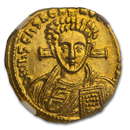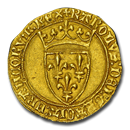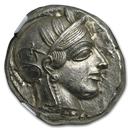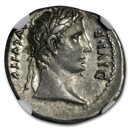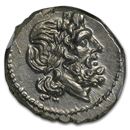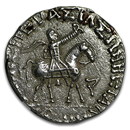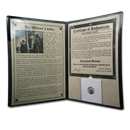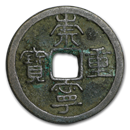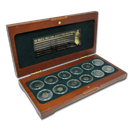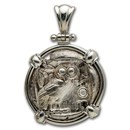Ancient & Medieval Coins

Ancient & Medieval Coins
Ancient & Medieval coins, sometimes called antique coins are very desirable to collectors due to their history, beauty and the intrinsic value of the Precious Metals that went into creating each coin. They also provide a tangible link to mankind's historic past. By definition, the newest of these coins are at least 550 years old, and the countries and empires that issued them show that these historic coins gave the people that used them confidence in their value because of the Precious Metals they contained.
History of Coinage
Ancient and medieval coins offer a fascinating glimpse into the history of civilizations that have long passed. These coins are not just objects of monetary value but also serve as tangible artifacts that tell stories of the past. The history of ancient coins dates back thousands of years, with the earliest examples originating in ancient China and the Near East around the 7th century BCE. These early coins were made of various materials such as bronze, silver, and gold, and often featured intricate designs and inscriptions that represented the ruling authority or symbolized important cultural or religious beliefs.
As civilizations progressed, so did the artistry and complexity of their coins. Ancient Greek and Roman coins are particularly sought after by collectors due to their exceptional craftsmanship and historical significance. Greek coins often depicted gods, mythological creatures, or important city-state symbols, providing insights into the rich cultural and political tapestry of the time. Roman coins, on the other hand, showcased the emperors and their accomplishments, offering a glimpse into the power dynamics and historical events of the Roman Empire.
Moving into the medieval period, coins continued to evolve, reflecting the changing political and societal landscape. Medieval coins were often minted by different rulers and kingdoms, each with their unique designs and symbols. Collecting medieval coins allows enthusiasts to explore the rise and fall of kingdoms, feudal systems, and the impact of major historical events such as the Crusades or the Black Death. Additionally, coins from this era can also provide valuable insights into the economic systems, trade routes, and cultural interactions of the time.
For collectors, ancient and medieval coins are not only objects of historical significance but also represent a connection to the past. The thrill of finding a rare or well-preserved coin, carefully studying its engravings, and deciphering the inscriptions can be immensely rewarding. These coins not only serve as a tangible link to ancient civilizations but also offer a tangible investment opportunity, as their rarity and historical value often make them highly sought after in the numismatic market.
Collecting ancient (antique) and medieval coins requires knowledge, research, and a discerning eye for authenticity. It is important to familiarize oneself with the various coin types, minting techniques, and historical contexts to make informed decisions. Joining numismatic societies, attending coin shows, and seeking expert advice can all enhance the collecting experience. Ultimately, the pursuit of ancient and medieval coins is a journey through time, where collectors can hold pieces of history in their hands and preserve the legacy of civilizations long gone.
Buy Ancient Coins Online
Each of these ancient coins offered here comes from different time periods throughout history. It gives us an important glimpse into how important currency was and still is today. Buyers can literally own a piece of history in their hands with these rare coins. They are unlike any traditional bullion or commemorative set. Every finish is different because minting technology was archaic and virtually non-existent. These surviving coins are considered the highest valued collectible coins there are today because they are one of the first coins on the planet used as currency or trade.
Ancient Gold Coins
Gold coins have been made since King Croesus of Lydia had them struck between 560 and 546 BC. They have been made bearing the likenesses of Alexander the Great and his successors, Roman Emperors and Byzantine Emperors from the late 5th century AD until the fall of the Byzantine Empire in 1453.
Ancient Silver Coins
The first Roman Silver coins, the Didrachm coins, were struck around 280 BC along with cast Bronze Aes Grave. The pre-Denarius Silver coins, very rare Silver coins from 280 BC to 211 BC, were called Didrachms. The Coin Reform of 211 BC made the Denarius the main Silver coin and the Aes the main Bronze coin. The coins of the Roman Empire began with the first Emperor Augustus in 41 BC. The main coins were the Silver Denarius and the Bronze As. These splendid Ancient Silver coins and Bronze coins were de-based over the years, and in 215 AD the double Denarius, named Antoninianus, was issued.
Learn More About Precious Metals
Buying Precious Metals doesn’t have to be intimidating. Whether you are making a long-term investment or simply admire the beauty of Precious Metals, APMEX provides the tools to help you make the best choice for your portfolio.
See All Articles
